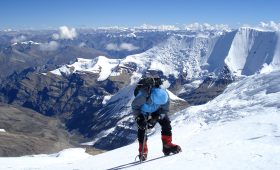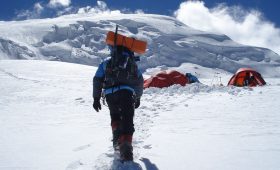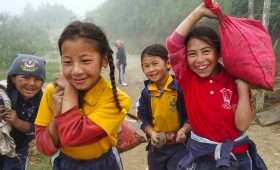What immunization do I need?
There are no official requirements for any immunizations to enter Nepal, Tibet, India or Bhutan. However please consult a doctor for vaccination against the following:
• Hepatitis A
• Hepatitis B
• Tetanus
• Typhoid
• Japanese Encephalitis (JE) – if you are going on Jungle Safari
• Malaria – if you are going to India.
If you are undergoing a course of prescription medicine, please ensure that you have sufficient supplies for the entire holiday. Some types of drugs including anti-malarias have side effects at high altitude; therefore please consult your doctors regarding these drugs. The places you trek are mosquito free and there has been no report on malaria in Kathmandu for the past couple of decades. If you are travelling to India you might want to consider taking anti malaria medication.
If you have special dietary requirements or allergies, please through your agent, give us a list of what you can and can’t eat so that we can provide proper food for you.
Do I need to bring my medical supplies?
Our Leaders carry a comprehensive first aid medical kit in all our trips, consisting wide variety medications like different types of antibiotics, anti histamines, anti inflammatory, diamox, cold flu tablets and rehydration salts. However, you should consider to include the following list of items in your personal medical kit.
Medical checklist
• antihistamine for allergies, and to ease the itch from insect bites or stings
• throat lozenges and nasal decongestant
• multivitamins for long trips, when dietary vitamin intake may be inadequate
• rehydration mixture to prevent dehydration
• insect repellent, sunscreen, lip balm and eye drops
• calamine lotion, sting-relief spray or Aloe Vera to ease irritation from sunburn
• bandages, crepe wraps, Band-Aids (plasters) and other wound dressings
What is AMS?
AMS stands for Acute Mountain Sickness. The general symptoms are severe headaches, nausea, lethargy, loss of appetite and serious breathlessness even at rest. Generally, headaches and breathlessness are common at altitude which in itself is nothing to worry about. In rare cases, this may worsen to Acute Mountain sickness (AMS),
If not taken care properly, it could be extremely dangerous and sometimes fatal. A close watch is kept on all trekkers by the group leader who is trained to recognize the symptoms of AMS.
The greatest provocation is going too high too fast. Hi On Life’s itinerary has been carefully designed to minimize the affects of altitude. We ascend slowly and surely allowing enough time for safe acclimatization.
If any trekkers show such signs they will be descended to relatively lower and safer altitude. The Group Leader’s decision on evacuating such person to a safe altitude is final.
Do not medicate yourself without first informing your group leader.
AMS can be prevented
Going to altitude slowly with adequate rest and adequate intake of fluid (3 to 4 liters per day), you will most likely have no problems apart from breathlessness on hills which is completely normal as the percentage of Oxygen in the air is relatively lower to that at sea level.
The most important thing is not to worry about altitude because our team is there to take care of you.
It should be noted that we take sufficient no. of rest days beyond 3400m to get acclimatized to high altitude and take immense care and precautions for the clients to avoid the risks of high altitude.



